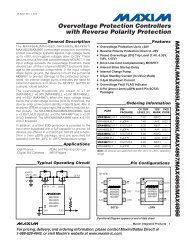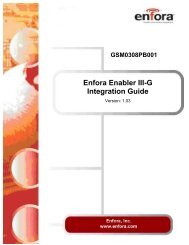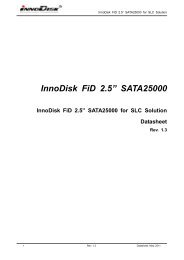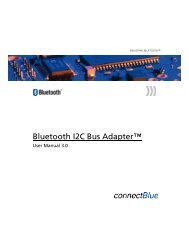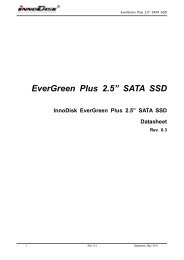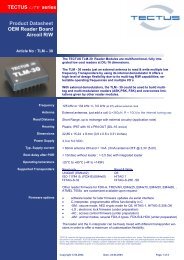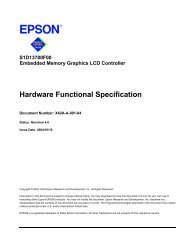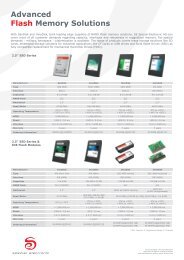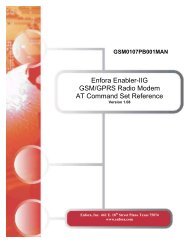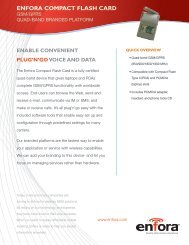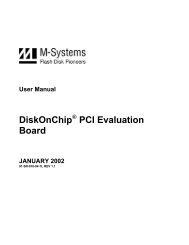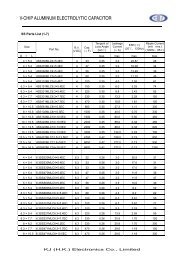AT+i Programmer's Manual - SE Spezial-Electronic AG
AT+i Programmer's Manual - SE Spezial-Electronic AG
AT+i Programmer's Manual - SE Spezial-Electronic AG
Create successful ePaper yourself
Turn your PDF publications into a flip-book with our unique Google optimized e-Paper software.
22 MIME Encapsulated E-Mail Messages<br />
22.1 iChip-Generated Binary Message Formats<br />
MIME Encapsulated E-Mail Messages<br />
Binary e-mail messages are sent via iChip using one or more <strong>AT+i</strong>EMB commands. The<br />
message format is limited to an optional body of text and a single attachment.<br />
The following fields are added by iChip to the main message header:<br />
X-Mailer: iChip <br />
Message-ID: @iChip<br />
Mime-Version: 1.0<br />
Content-Type: multipart/mixed; boundary=”CONE-iChip-”<br />
The message‘s preface contains the following text:<br />
“This MIME message was coded by iChip.”<br />
If the host application includes a text body for the message, it also contains the following<br />
lines in its header:<br />
Content-Type: text/plain; charset=us-ascii<br />
Content-Transfer-Encoding: 7bit<br />
X-iCoverpage: Email<br />
When no textual body contents are included – this section is omitted.<br />
The binary attachment section follows, beginning with a MIME attachment header<br />
containing the following fields:<br />
Content-Type: /;<br />
name=<br />
Content-Transfer-Encoding: base64<br />
where,<br />
:= ―text‖ / ―image‖ / ―audio‖ / ―video‖ / ―application‖<br />
:= <br />
:= or<br />
<br />
defaults to ―application‖ when otherwise not defined.<br />
defaults to ―octet-stream‖ when otherwise not defined.<br />
Following the header, a base 64-encoded data stream includes the entire binary data<br />
transferred to iChip from the host.<br />
22.2 MIME-Related <strong>AT+i</strong> Commands and Parameters<br />
Binary images are transferred to iChip for MIME message encapsulation via one or more<br />
<strong>AT+i</strong>EMB commands. An <strong>AT+i</strong>EMB command sequence must be terminated by the<br />
<strong>AT+i</strong>E* command, indicating the end of the binary e-mail message.<br />
When several consecutive <strong>AT+i</strong>EMB commands are used, the host must issue the<br />
commands with an inter-command delay, which does not violate the SMTP server‘s<br />
timeout constraints. Otherwise, the SMTP server will timeout and abort the session.<br />
Average SMTP servers allow for delays in the range of 30 to 120 seconds. Additional



